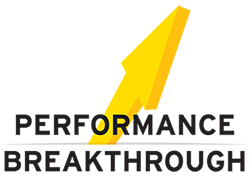“In a culture that sometimes equates work with suffering, it is revolutionary to suggest that the best inward sign of vocation is deep gladness—revolutionary but true.” ~ Parker Palmer, The Courage to Teach
People prefer leisure to work—no surprise there. What is surprising is that they report more optimal feelings of being “in the zone” when engaged in work.
This strange, yet revealing, paradox may explain why so many U.S. retirees experience depression and ultimately return to work.
While we clearly associate leisure with pleasure, we seem to have an unwarranted prejudice against work: We automatically associate it with pain. This belief is so deeply rooted that it distorts our perceptions of actual experiences. It’s a learned response that severely limits our potential for happiness at work.
To achieve professional satisfaction, you must experience—and consciously record—the positive emotions you feel on the job.
Finding Flow
Claremont Graduate University Professor Mihaly Csikszentmihalyi was one of the first psychologists to study the concept of “flow.”
Flow occurs when we are fully immersed in a task, enjoying ourselves while performing our best. It can happen anywhere, anytime. We experience it when we participate in sports and hobbies. More frequently, our flow experiences occur during periods of peak performance at work.
When we fail to recognize pleasurable moments at work, focusing solely on the negative, we miss out on experiencing more happiness and satisfaction. Each of us must find ways to extract more meaning and fulfillment from the “daily grind.”
It’s often a matter of reframing situations and changing the way we speak about our tasks and responsibilities. Other times, we can devise games and turn work into play. Some people find it helpful to ask a trusted peer to serve as an accountability partner, working toward concrete goals and milestones.
Action Steps
Reflection and action yield meaning and energy. Harvard University Continuing Education Professor Tal Ben-Shahar combines these two powerful learning tools into one concept: “ReflAction.”
In his excellent book, Even Happier: A Gratitude Journal for Daily Joy and Lasting Fulfillment, Dr. Ben-Shahar urges readers who seek happiness to record their experiences and ideas in a journal. In addition, work with an accountability partner to become more mindful of moments of gratitude.
Even Happier features numerous exercises that can be used in groups, book clubs, seminars or workplaces.
Lifelong Learning
The happiest, most successful people are lifelong learners, according to numerous research studies. Learners constantly ask questions and find a sense of wonder in the world.
Recall the wonder and enthusiasm you enjoyed at the beginning of your career. If you’ve lost some of the proverbial “lovin’ feeling” (and most people have), recapture it by initiating an education program of your choosing. Your program should include two categories:
1. Personal development
2. Professional enrichment
Commit to learning material that will benefit you currently and in the future. Be sure to allocate regular time in your schedule for continuing education.
If you don’t know where to start, pick up a copy of 25 Days to Better Thinking and Better Living: A Guide for Improving Every Aspect of Your Life, by Drs. Linda Elder and Richard Paul. Read one chapter each week as part of your personal-development commitment.
For professional enrichment, seek out a mentor you trust, and ask him/her to join you for lunch. You can also hire a coach to help you improve on the job or attend a seminar on the latest developments in your field.
Think about the relationships among all of these activities. What makes them enjoyable? Is there any overlap between the personal and professional? If so, can you identify a common theme in both “work” and “play” that you enjoy?
Making Work More Like Play
Thriving at work allows you to do so at home and at play. There’s really no need to separate the two worlds, according to neuroscientist and “play researcher” Stuart Brown, MD, who describes their strong correlation in his book Play: How It Shapes the Brain, Opens the Imagination and Invigorates the Soul.
When you feel the temptation to complain about work, stop yourself. Rephrase what you were about to say by focusing on the more interesting parts of your day. Make an active effort to recognize and record the positive aspects of your job so you can experience more pleasure and flow.

